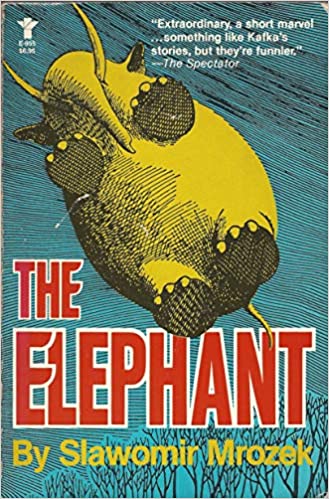AGGREGATION OF CELLS
Tissue is a group of similar cells that perform same function and have a common origin.
Types of tissue: Plants have two fundamental types of tissue, viz. meristematic and permanent tissue.
Meristematic tissue or meristem: The group of cells localized in a region that are actively dividing or have potential to divide is called meristem or meristematic tissue (Greek, meristos = divisible).
Characteristics of meristem:
i. Cells mostly isodiametric, thin-walled and without intercellular space.
ii. Cells take deep stain and have large nuclei.
iii. Cells have dense cytoplasm either with very small vacuoles or without vacuoles.
iv. The protoplasts of the cells are devoid of reserve food material and plastids.
Types of meristem:
Meristem can be classified on the following basis:
a. Based on origin and development:
i. Promeristem or primordial meristem: Originated from embryo, hence called as primordial or embryonic meristem.It is the region of new growth in the plant body where the foundation of new organs or parts is laid. It gives rise to primary meristem.
ii. Primary meristem: It is derived from promeristem and retains power to divide. It gives rise to primary permanent tissues. E.g. Root and shoot apices and leaf primordia are main primary meristem.
iii. Secondary meristem: It develops in primary permanent tissues and give rise to the secondary permanent tissues. E.g. Cambium of root, interfasicular cambium of stem and cork cambium (phellogen) in root and stem.
b. Based on location:
i. Apical meristem: It is found on apices of shoot and root, and responsible for increase in length of shoot and root. It gives rise to primary permanent tissue of plant.
ii. Intercalary meristem: This are portion of apical meristem that detached during the growth of axis and formation of permanent tissues. It is found at bases of internodes in grasses and wheat or at the base of leaf as in Pinus or at base of nodes as in mint, and responsible for increase in length of the plant or its organs.
iii. Lateral meristem: It is present along the lateral sides of the stem and root. Cells are rectangular in shape and divide tangentially resulting in increase in diameter. It gives rise to secondary permanent tissues. E.g.Vascular cambium and cork cambium of dicotyledons and gymnosperms.
Theories proposed for the development of shoot apical meristem
1. Apical Cell Theory:
Nageli in 1944 advocated this theory. According to this theory the apical meristem consists of a single apical cell (also called apical initial) and this cell develops in to entire plant body.
Schmidt Proposed tunica corpus theory to explain shoot apex development.
According to tunica corpus theory proposed by Schmidt (1924), two distinct zones, tunica and corpus occur in the shoot apex of angiosperms. Tunica is the peripheral zone consisting of one or more layers of regularly arranged cells that divide anticlinally forming the epidermis and leaf, whereas corpus is the inner mass of cells surrounded by tunica where cells divide periclinally forming the cortex and vascular tissues of the developing shoot apex.
Differences between root apex and shoot apex:
3. Differentiate between shoot apex and root apex. (Give any two)[2,01]
Ans. Following are the differences between shoot apex and root apex:
Shoot apex
|
Root apex
|
1. Apical in nature
2. Protected by young leaves
3. Bears lateral appendages in the form of leaf primordial
4. Distinct nodes and internodes present
5. Cells green and photosynthetic
|
1. Sub-terminal in nature
2. Protected by root cap
3. Does not bear lateral appendages
4. Nodes and internodes absent
5. Cells non-green and non-photosynthetic
|
3.Histogen Theory:
According to Hanstein (1870), the root and shoot apices of plants consist of three distinct meristematic zones called histogen.
They are (i) dermatogen (derma, skin; gen, producing) the outer single layered zone, that give rise to epidermis by radial cell division, (ii) periblem (peri, around; blema, covering), the middle layer, that gives rise to cortex and endodermis, and (iii) plerome (pleres, full) innermost layer, that gives rise to vascular cylinder and pith. It was later found that these three layers are not distinguishable in most of the gymnosperms and angiosperms and hence the theory was dropped.
Quiescent centre:
|
|
Permanent tissues (Structure and function):
Permanent tissue is a group of cells in which the growth has either stopped completely or for the time being. The cells may be dead or alive, thin-walled or thick-walled. Following are different types of permanent tissues:
A. Simple permanent tissues: Simple permanent tissue is a group of cells which are all alike in origin, form and function.
i. Parenchyma:
Structure: Cells are usually isodiametric, oval, circular or polygonal with intercellular spaces. They are living cells with relatively thin primary cell walls.
Function:
prosenchyma, the elongated, pointed and slightly thick walled cells and help herbaceous plants maintain its shape.
ii. Collenchyma:
Structure: It is specialized supporting tissue consisting of living cells with cell walls thickened at corners with cellulose and pectin deposits. Shape of the cells varies and appears circular, oval or polyhedral in cross section.
Function:
[i]. Provides mechanical support to the organs and in stems provides tensile strength.
[ii]. When chloroplast is present it takes part in photosynthesis.
iii. Sclerenchyma:
Simple tissue composed of cells with thick and lignified wall, and of variable shape, size, origin and development of the cells. Two types are:
a. Fibres- The cells greatly elongated and tapering at both the ends. The fibres with simple pits in their walls and occurring in pericycle and phloem are called bast fibres and those associated with wood or xylem is called wood fibre.
b. Sclereids or stone cells- Cells are isodiametric, spherical, oval, stellate, T-shaped or cylindrical and may occur singly or in groups in any part of the plant but most in fruits and seeds. They have thick and highly lignified walls with numerous simple pits.
Functions:
[i]. It provides mechanical strength and rigidity to the plant body.
[ii]. Sclereids in pulp of many fruits provide grittiness to pulp.
[iii]. It saves plant from various stresses and strains of environmental forces like strong wind, etc.
B. Complex permanent tissues:
A complex tissue is a collection of different types of cells which form a structural unit and performs a specific function.
Composed of four types of living and non-living cells known as xylem elements and conducts water and minerals dissolved in it.
The three main components of xylem are:(a) Tracheids: These are highly specialized cells, principally concerned with conduction of water. Tracheids are found in vascular tissue of ferns and gymnosperm.
The three main components of xylem are:(a) Tracheids: These are highly specialized cells, principally concerned with conduction of water. Tracheids are found in vascular tissue of ferns and gymnosperm.
(b) Vessels also known as Tracheae are long cylindrical cells arranged end to end with their walls completely or partially dissolved, thus form long tube. Tracheids along with vessels form the main tissue of xylem in angiosperms. (b) Xylem fibres (Wood fibre). These are supporting cells with thick lignified walls and narrow lumen, and provide mechanical support.
(c) Xylem parenchyma. These are living parenchymatous cells (wood parenchyma) concerned with storage of food materials and help translocation of water and minerals.
(ii) Phloem:
It is another complex tissue that is mainly concerned with translocation of food materials. It has following four components:
a) Sieve tubes.
a) Sieve tubes.
They are living, slender and elongated tubular cells with large cavities and thin cell wall but without nucleus, and are placed end-to-end. The cells have in or near the end wall sieve plates with sieve pits. They are the conducting cells.
(b) Companion cells. These are living cells with dense granular cytoplasm, a prominent elongated nucleus and numerous vacuoles and found associated with sieve tubes in angiosperms. Along with phloem parenchyma, companion cells help maintain pressure gradient of the sieve tubes by means of cytoplasmic strands that link it directly with sieve tubes.
(c) Phloem parenchyma. These are living cylindrical parenchymatous cells associated with sieve tubes and are usually absent in monocots. They store starch, fat and other organic food materials and help lateral transport of food materials and water.
(d) Phloem fibres or bast fibres. These are typically elongated cells with interlocked ends and lignified walls having small simple pits. Besides providing support they also play a role in transport of food materials and are found in both primary and secondary phloem.
Types of vascular bundles:
1. Differentiate between exarch and endoarch xylem [1,00]
Ans . Exarch is vascular bundle that has protoxylem towards periphery and metaxylem towards centre, e.g. VB of roots.
While endarch is VB that has protoxylem towards centre and metaxylem towards periphery, e.g. VBs of stem.
2. Give account of various types of vascular bundles present in plants.
Ans. Following are various types of vascular bundle present in plants as per relative position of xylem and phloem in the vascular bundles:
a) Radial: The vascular bundle where xylem and phloem are arranged alternately on different radii thus forming separate bundles as in roots.
b) Conjoint: The vascular bundle in which xylem and phloem combine into one bundle. It is of following types:
i. Collateral: Vascular bundle in which xylem and phloem are present on same radius with phloem on the outer side of the xylem. It is of two types as in dicotyledonous stem open with intrafasicular cambium in between xylem and phloem, and closed as in monocotyledonous stem where there is no cambium.
ii. Bicollateral: Vascular bundle where xylem is sandwiched between inner cambium and inner phloem and outer cambium and outer phloem. E.g. in Cucurbitaceae family.
Anatomical differences between dicot and monocot stems:
Dicot stem
|
Monocot stem
|
i. Ground tissue is usually differentiated into collenchymatous hypodermis, parenchymatous middle cortex, and pith.
ii. Vascular bundles conjoint, collateral, endarch and open.
iii. Vascular bundles arranged in a ring and are of nearly uniform size.
iv. Vascular bundles not surrounded by sclerenchymatous sheath.
v. Phloem composed of sieve tubes, companion cells and phloem parenchyma.
vi. Medullary rays occur in the form of strips of parenchymatous cells in between the vascular bundles.
vii. Pith present.
viii. Secondary growth occurs.
|
i. Ground tissue is usually undifferentiated.
ii. Vascular bundles are conjoint, collateral, endarch and closed.
iii. Vascular bundles scattered and are of various sizes, usually larger towards the centre.
iv. Each vascular bundle is surrounded by a sclerenchymatous sheath.
v. Phloem composed of only sieve tubes and companion cells; phloem parenchyma absent.
vi. Medullary rays not marked.
vii. Pith absent.
viii. Secondary growth usually does not occur.
|
II. Anatomical differences between dicot and monocot roots:
Dicot root
|
Monocot root
|
i. Pericycle gives rise to lateral roots, phellogen and a part of vascular cambium.
ii. Vascular bundles usually 2-6. Vessels appear angular or polygonal in transaction.
iii. Conjunctive tissue is parenchymatous; its cells differentiate into vascular cambium.
iv. Cambium appears as a secondary meristem at the time of secondary growth.
v. Pith is absent or poorly developed.
|
i. Pericycle gives rise to lateral roots only.
ii. Vascular bundles usually 6-20. Vessels appear oval or rounded in transaction.
iii. Conjunctive tissue mostly sclerenchymatous but sometimes parenchymatous; it never differentiates into vascular cambium.
iv. Cambium all together absent.
v. Pith large and well developed.
|
III. Anatomical differences between dicot and monocot leaf:
Dicot leaf
|
Monocot leaf
|
i. It is dorsiventral or bifacial type.
ii. Stomata are mostly confined in the lower epidermis.
iii. Mesophyll differentiated into upper palisade and lower spongy parenchyma.
iv. Vascular system has usually a single main vein which runs through centre of the lamina and gives off successive thinner branches that form a netted pattern throughout the lamina.
v. Vascular bundle has a single bundle sheath of thin-walled parenchymatous cells.
|
i. It is isobilateral or equifacial type.
ii. Stomata equally distributed in both lower and upper epidermis.
iii. Mesophyll not differentiated into palisade and spongy parenchyma but comprised only of palisade on both upper and lower surfaces.
iv. Vascular system has several veins of nearly uniform size that run longitudinally and join at the apex of the leaf.
v. Vascular bundle has usually two bundle sheaths, the outer parenchymatous and the inner thick walled cells.
|


























0 Comments